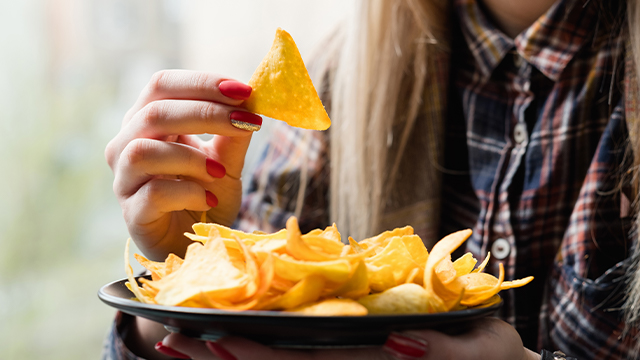

The savoury snacking consumer landscape
Australians are snacking more now than they have in the last three years. We know that almost every household (99.8%) in Australia has purchased Savoury Snacks (Chips, Wrapped Bars, Savoury Biscuits, Snacking Nuts) in the last year, but what is interesting is the frequency and proliferation of the range of snacks in consumer baskets.
In 2019, three out of 10 shopping trips contained these goodies and two thirds of shoppers purchased a savoury snack each week. This resulted in the average Australian household buying 90 savoury snacks per year, with the heaviest buyers shelling out $462 in total. Chips are the most popular addition to the basket, with snack shoppers allocating $4.05 in every $10 category spend on Chips, followed by Savoury Biscuits, wrapped bars and snacking nuts.
Market drivers for the snacking category
In 2019 the lucrative $2.99 Billion Savoury Snacking industry achieved respectable dollar growth of 4.1%, well above total grocery growth of 2.7%. The category also had an increased innovation focus with a number of new products entering the market; Chips, the largest segment, drove this positive performance with value growing of 5.6%, followed by Bars at 3.0%, Savoury Biscuits 2.9% and Nuts 2.6%.
Consumer dynamics
Consumer dynamics within Savoury Snacks has led to two dominating themes which are delivering growth. These are lunch box fillers which are ‘fun’ and ‘new’ for families and also new flavours to keep shoppers returning to the brand.
The IRI Shopper Panellists reinforce these trends with 61% of snack shoppers agreeing that they like to try new products / brands, and a similar proportion agreeing that they like to experiment with food and try new things.2
Lunch box fillers – Who spends the most?
Households with children at home spend the most on snacks, which act as lunchbox inspiration; making them a sought after demographic by leading manufacturers. Bucking the health trends, The LCM’s brand captured the imagination of parents with LCM Coco Pops Cookies & Cream (NPD), which built on the success of LCM Unicorn (in 4.7% of households). Kellogg’s has also shaken up the lunchbox options by shifting Pringles away from the traditional tin format to launch into multi-pack varieties which have proven very successful; finding their way into 8.4% of households in their first year alone.
Flavour experimentation – Consumers are becoming more adventurous
In a mature category like Snacking, flavour has long been the grounds for experimentation to entice new shoppers into brands, and increase the value of existing shoppers through high trial rates. Last year Pringles launched the successful Mystery Flavour campaign and will see the campaign run again this year. Of the successful NPDs in the last year we saw Asian flavours pop with Red Rock Deli’s Pot Thai Red Chilli & Creamy Coconut, as well as local favourites through Lamington (Smith’s) and Vegemite (Arnott’s).
With less than a third of IRI’s Australian shopper panellists saying they perceive that “the name of the brand I buy is important to me”, retailers and brands should take risks and do so at speed in order to take the next step in their evolution. For global brands and retailers, the question is whether they can be both big and fast.
For more information on how IRI can provide data and insights to grow your business, click here.
By Sally Elstub, Senior Consultant, IRI
Sources:
IRI ShopperView, National Panel, MAT 02/02/2020 – unless otherwise specified
IRI MarketView, AU Grocery, MAT 05/1/20

